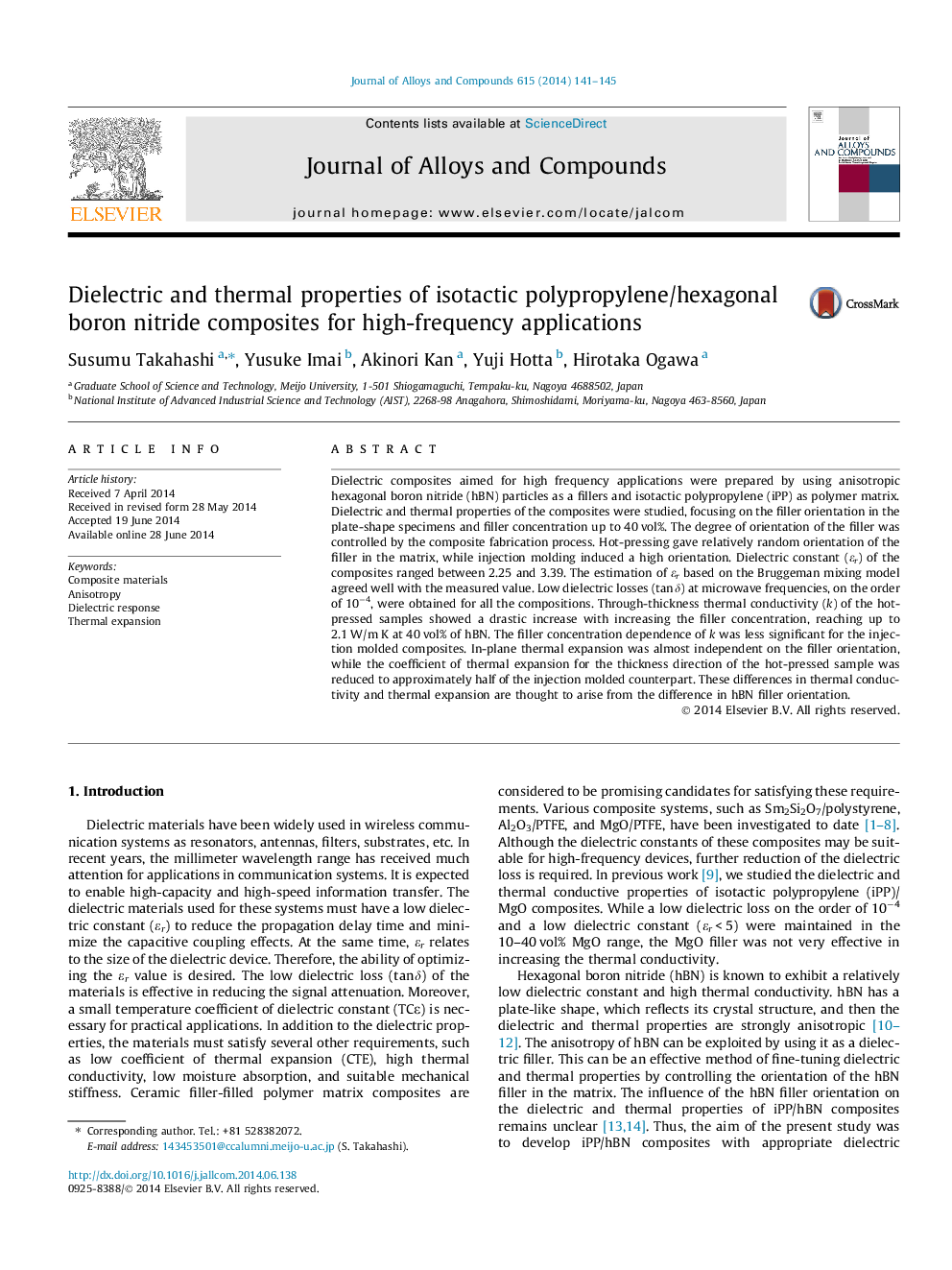| Article ID | Journal | Published Year | Pages | File Type |
|---|---|---|---|---|
| 8000871 | Journal of Alloys and Compounds | 2014 | 5 Pages |
Abstract
Dielectric composites aimed for high frequency applications were prepared by using anisotropic hexagonal boron nitride (hBN) particles as a fillers and isotactic polypropylene (iPP) as polymer matrix. Dielectric and thermal properties of the composites were studied, focusing on the filler orientation in the plate-shape specimens and filler concentration up to 40 vol%. The degree of orientation of the filler was controlled by the composite fabrication process. Hot-pressing gave relatively random orientation of the filler in the matrix, while injection molding induced a high orientation. Dielectric constant (εr) of the composites ranged between 2.25 and 3.39. The estimation of εr based on the Bruggeman mixing model agreed well with the measured value. Low dielectric losses (tan δ) at microwave frequencies, on the order of 10â4, were obtained for all the compositions. Through-thickness thermal conductivity (k) of the hot-pressed samples showed a drastic increase with increasing the filler concentration, reaching up to 2.1 W/m K at 40 vol% of hBN. The filler concentration dependence of k was less significant for the injection molded composites. In-plane thermal expansion was almost independent on the filler orientation, while the coefficient of thermal expansion for the thickness direction of the hot-pressed sample was reduced to approximately half of the injection molded counterpart. These differences in thermal conductivity and thermal expansion are thought to arise from the difference in hBN filler orientation.
Related Topics
Physical Sciences and Engineering
Materials Science
Metals and Alloys
Authors
Susumu Takahashi, Yusuke Imai, Akinori Kan, Yuji Hotta, Hirotaka Ogawa,
